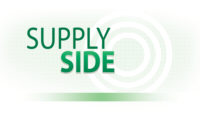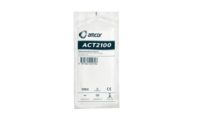We sat down and discussed coating/laminating with Giancarlo Caimmi from Nordmeccanica Group and Rick Keller from David Standard.
What do you see as the best recent advances in coating/laminating equipment?
Keller: Our Industry 4.0 initiative is focused on reducing waste and increasing uptime through advanced monitoring of the coating/laminating process. Although our Industry 4.0 initiative is still in development, the focus is to alarm and predict negative impact events before they cause waste, thereby reducing production waste. This is part of the effort to improve first-pass yields through use of next level automation and controls. These controls are compatible with our new DS Activ-Check system, a continuous monitoring platform for extruding used for predictive and preventative maintenance. DS Activ-Check does require additional sensors on extruder components such as the gearbox and motor. However, sensor technology is providing opportunities as it is becoming less costly to add while enhancing the monitoring of machines. Monitoring and correction at these critical points will increase operational efficiency while decreasing costs.
Caimmi: The machinery industry is under constant evolution. Productivity, safety, energy savings are topics under continuous development. It is about performance: the ability to run at higher production rates, not just “speed,” but a complex compendium of quick changeover, low scrap rate and ability to reach quality faster.
Safety is one of the most influential factors in machine design. The development of safe machinery in accordance with fast-evolving regulations is always a concern for machinery manufacturers. It is not just about safety, it is also about safety associated with ease of use.
Definitely the newest thing happened in this industry in laminating equipment has been the introduction of the Duplex SL One Shot laminator concept. Developed to offer almost instant cure to flexible substrates laminated using solventless adhesives. The technology was conceived three years ago in cooperation with Dow Chemical, requiring the design of a new concept of laminator and formulation of a specific adhesive. With numerous installations worldwide, it has proven a market success.
Another consistent territory of innovation is Industry 4.0 equipment evolution. This is a complex concept affecting machine design. It is about integration of evolved equipment in the digital world. Nordmeccanica has been a front runner in innovation in the digital era, pioneering the use of digital vector drives for sophisticated web handling technologies. Nordmeccanica is one of only 10 companies worldwide that Siemens uses for beta testing of new developments. This allows Nordmeccanica a first opportunity to integrate new automation developments. This is quintessential to allow us to provide products that are aligned to the most recent evolutions. It is about integrating state-of-the-art equipment into the most evolved factory setup worldwide. Data must be handled quickly and, most importantly, safely. Data safety does not concern only the safeguard of proprietary information but primarily the safe use of production equipment.
How is the coating/laminating market evolving, and how do these changes affect development of new equipment in this area?
Keller: In general, we see requirements for machines that can enhance shorter SKU production runs but yet function as continuous operations with automatic roll-to-roll splicing. Line speeds are increasing and the unwind and winder capabilities are becoming more of a focus on higher-end machines.
Caimmi: We are witnessing a significant evolution in the flexible packaging industry in which packaging is easier to recycle and more respectful of the environment. Flexible packaging is way better than any competitive packaging technology, but a new evolution into more effective designs will benefit this industry. Therefore, we are constantly exposed to innovative substrates that can decompose and to laminated compounds with a high degree of chemical uniformity that allows the finished structure to be recyclable.
This is a fast-evolving industry with many projects developing at the same time. In many cases the intended use of a machine is at such an innovative level to require a custom design. It is about the nature of the conversion itself as it is about the web handling needs of innovative substrates. Thanks to our integrated machine design technology, Nordmeccanica is able to respond to those custom needs with a high degree of reliability.
Thinner webs are being used to reduce the total volume of the laminated compound while at the same time the use of thicker-gauge webs is forced by the requirements of e-commerce. E-commerce does not only impose the use of thicker webs to make the package more resistant to damage in the multiple transportation stages it will go through in the several distribution centers during its travel from the factory to the end consumer. E-commerce also requires converters to improve time to market. Therefore, higher productivity in short runs is imperative, and machines must be designed accordingly. Nordmeccanica just presented a new concept of laminator specifically intended to serve this market, Super Simplex e800.
Demand for improved shelf life requires the development of increased barrier properties. That can be taken care through the use of higher-barrier webs, a lamination process that will imply specific issues related to the intrinsic barrier nature of such webs with specific reference to the metallized ones. Nordmeccanica set the industry standards in this specific segment by machine design and by technological evolution of the entire process involving machine and adhesive. An effective solution to increased barrier properties can be implemented using performance coatings. We have developed, in cooperation with Henkel, an innovation program named BarrEnhanceTech Alliance, which targets the implementation of new technologies and products.
How are sustainability issues affecting the coating/laminating arena?
Keller: Certainly, recyclability is a growing requirement among consumer packaging products. In this arena, there is a continuing focus on down-gauging which leads to demands for higher line speeds and more sophisticated web handling. Additionally, selection of the layers within a composite laminate is trending to choices of similar materials, which may require different coatings and treatments to achieve the function of the replaced layer. There is also a renewed focus on waste, especially as it relates to the aforementioned general drive towards shorter SKU production runs and improved first-pass yields.
Caimmi: As mentioned in previous answers, sustainability concerns have affected both, the coated-laminated compound and machine design. Nordmeccanica’s standard use of regenerative drives, in example, allows our equipment to self-generate up to 20 percent of the total electric power consumed. It is a relevant consumption and cost savings. Nordmeccanica’s standard equipment qualifies in most states for tax deductions and incentives. Emission wise we claim with great pride to have been the strongest promoter of solvent-free lamination in North America, a technology that features no emissions and allows converters to claim local incentives upon installing new equipment.
What features are being added to coating/laminating equipment to control production waste?
Caimmi: Scrap reduction is paramount in coating and lamination. Converted substrates are expensive and the need to reduce such waste is more important during coating/laminating than at any other converting stage. Important results can be achieved by machine design. A more compact machine design allows for shorter webbing and for lower scrap. A proper technology in web handling allows the machine to eliminate scrap during speed rumps. OEM expertise in the design of coating heads allows for constant coating weight, eliminating a significant scrap variable.
New accurate technologies monitoring coating weight are available to the industry. This is a significant advance because for decades, specifically in the solvent-free lamination segment, it has been impossible to detect and measure the coated layer because of the negligible thickness. Now, a technology based on the readings of the NCO isocyanate content in the coated layer allows reliable monitoring. Nordmeccanica will have a demonstration of this technology cooperation with Henkel at the upcoming Pack Expo-Las Vegas.
Keller: Monitoring of all process variables as mentioned and correlation to web inspection and measurement devices allows for much tighter monitoring of the process and product on-line. This allows for alarming and immediate intervention that will lead to anticipatory control to prevent degradation of a critical variable and the production of waste during the process.
Space is at a premium in converters’ plants. Are OEMs under pressure to reduce the footprint of coating/laminating machinery?
Keller: Each machine tends to be a custom arrangement, and space is usually the prime criteria after satisfying the process needs of the line arrangement. Davis-Standard spends a lot of time upfront, working with the customers to make a beneficial layout of the components for our most complex lines. Our standard machines have been maximized for process and space requirements and generally are good layouts for those standard processes.
Caimmi: In general, floor space containment needs and scrap reduction needs go hand-in-hand. Nordmeccanica introduced the concept of compact machine design in this industry in 1992 with the first SIMPLEX, a new concept of coater laminator. The trigger was solvent-less lamination, a technology that does not require the use of a drying system. However, we expanded it to solvent- and water-based coating/lamination processes developing super-efficient driers that allows for top drying performance in a fraction of the space compared to traditional drying ovens. Part of the evolution in the compact machine design concept was the invention of the single position unwind and rewind design. An innovative shaftless unit allows for a very fast roll setup, while minimizing the overall footprint.
Is there anything else you’d like to share about coating/laminating?
Keller: We continue to see amazing web structures being developed to address applications with very specific functions of each layer of the composite. We feel the industry is gaining its legs to drive towards sustainable structures and materials. Participating in that development with leading machinery is quite satisfying.








